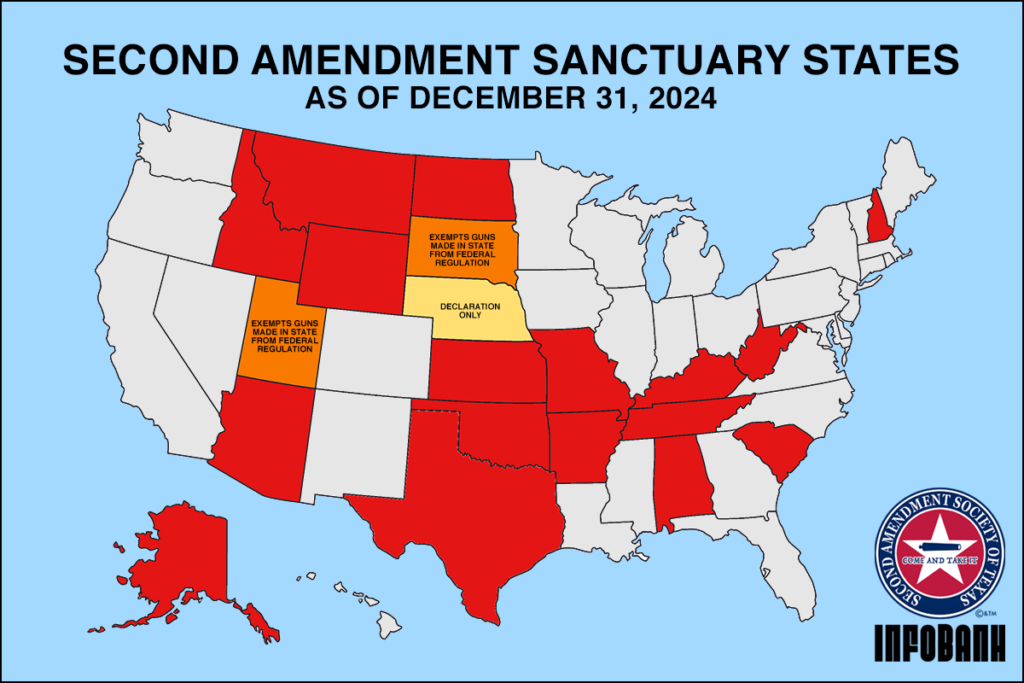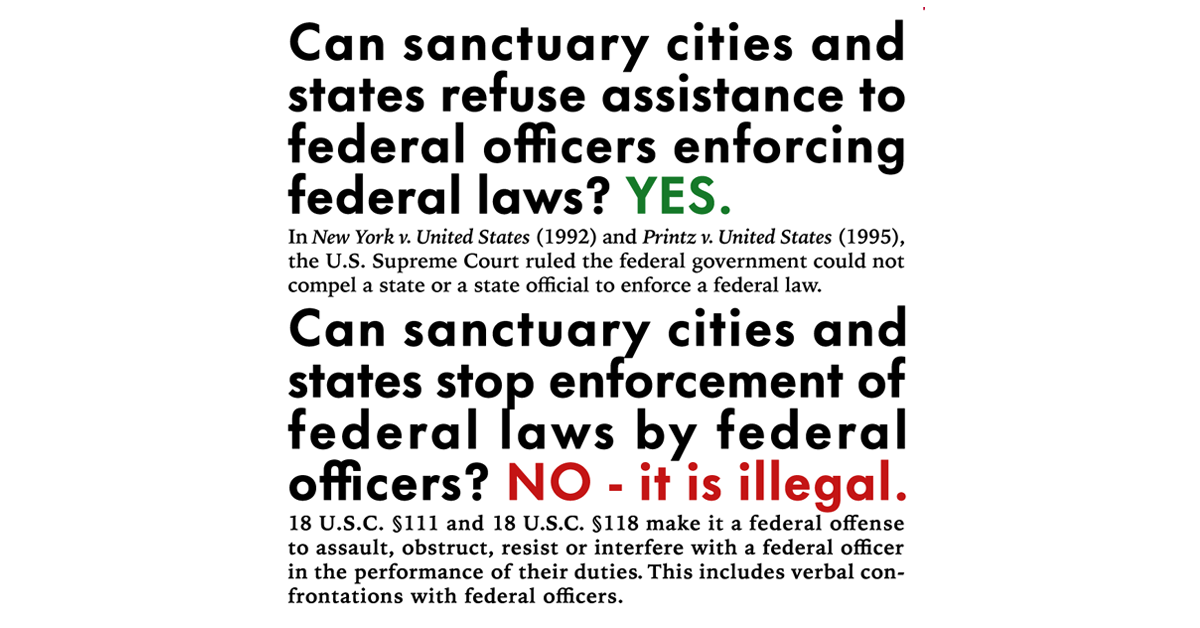America is home to a growing number of sanctuaries in cities, counties, and states. There are immigration sanctuaries, mostly cities, where authorities are forbidden to assist Immigration and Customs Enforcement agents in apprehending undocumented aliens. There are also Second Amendment Sanctuaries, usually states, that prohibit municipal, county, and state law enforcement officers from assisting federal officers in enforcement of federal gun laws that don’t have an analogous state law. There are also Second Amendment Sanctuary counties where sheriffs will refuse to enforce gun control laws they deem unconstitutional. At one time, over half the counties in the U.S. were either sanctuaries or had passed resolutions supporting the rights protected by the Second Amendment.
These are all legal. In New York v. United States and Printz v. United States, the Supreme Court said the federal government could not compel states – or public officials in those states – to enforce federal laws.
A key point to remember is the United States is not a democracy and states are not merely provinces with limited autonomy. The U.S. is a constitutional republic composed of 50 sovereign states with powers even the federal government does not possess. In fact, the states, acting in concert, can determine what powers the federal government has. American citizens have dual allegiances: One to the nation; one to the state in which they reside.
However, the Supreme Court’s anti-commandeering decisions go only so far. While the sanctuary states, counties, and cities can refuse assistance, they cannot prevent federal officers from enforcing federal laws. Both the U.S. Constitution’s Supremacy Clause and the Necessary and Proper Clause mean federal laws outrank state laws.
Missouri found this out the hard way when judges in both district and appellate courts in the Eighth Judicial Circuit ruled its Second Amendment Protection Act violated the Supremacy Clause last year. The courts held Missouri’s law went too far, declaring federal gun control laws to be null and void in the state.
With the new administration in the White House and a new “Border Czar”, some immigration sanctuary cities may soon find resisting ICE could be costly. It’s one thing to refuse assistance, quite another to help illegal aliens to evade federal officers.
There are currently 17 Second Amendment Sanctuary states. In general, they stay within the parameters set by the Supreme Court, refusing assistance but acknowledging the supremacy of federal laws.

The reality of Second Amendment Sanctuary states is that even though the Biden administration, like Elvis, has left the building, they already make up a third of the U.S. states and they will be useful when a not-so-friendly administration takes up residence at 1600 Pennsylvania Avenue.

